Native Americans and the Underground Railroad

Map showing routes of the Underground Railroad, used by enslaved people to escape into the free states of the United and Canada, between 1830-1865. The map was originally published in New York, 1920.
Researching facts of Native Americans harboring runaway African slaves has been an elusive study. Scholars have faced difficulty with irretrievable accounts and sparse documentation. Yet, the story of the Seminoles of Florida and the activities of the Nanticoke people of the Delaware region provide insight into this historical and present-day form of bilateral intersection.
From the beginning of American slavery, Africans attempted to escape. In the 17th Century, many Africans in the Carolinas, Alabama, and Georgia escaped to Florida and built settlements near the Seminoles. While many Indigenous Tribes emulated the Anglo practice of owning chattel slaves, the Seminoles never did. In addition to this refuge safe-haven, other recognized runaway camps included the Shawnee Oldfield Village on the Potomac River; an area next to Combahee and Ashepoo Rivers in South Carolina; Tuscarora, North Carolina; and an encampment near the Pamunkey River in Virginia.
For the slaveholding states in the Deep South, Native protected runaway slaves posed vast troubles. When 16th-century census takers discovered Native American communities harboring runaways, the Tribes were threatened with the loss of their Federal Tribal status, along with the nullification of treaties, land claims, and trade agreements. Despite these sanctions, Native Americans and Africans remained allied in most cases.
Colonial laws and state statutes concerning the illegal harboring of slaves reflected society’s values and attitudes toward what is deemed to be property. The few laws listed below are representative of the various jurisdictions:
1640: New York law forbids residents from harboring or feeding runaway slaves.
1751: South Carolina law stated: “The carrying of Negroes among the Indians has all along been thought detrimental, as an intimacy ought to be avoided.”
1848: Georgia Slave Code makes it a punishable offense for free Negro, Mulatto, and Mestizo to harbor slaves. Constables were authorized to search suspected premises for runaway slaves.
1856: Mississippi law mandated that any Indian, free Black, or Mulatto found guilty of harboring a runaway was to be fined $50.00 for each slave so harbored and imprisoned in the penitentiary for up to one year.
Bits and pieces of historical evidence point to many African American individuals, families, and even larger parties who sought and received the assistance of Native people while traveling through and from the slave-ridden Deep South in the hopes of reaching freer territories. Thus far, discoveries of written and oral evidence of such activity also predominate in the Midwest and Great Lakes region. This makes geographic sense, as African Americans seeking to cross the Ohio River and then the Canadian border from various (often water-bound) points were moving through territory still occupied, well known, and to a measurable extent controlled by Native people, particularly Shawnees, Anishinaabeg (Ojibwes, Potawatomis, Odawas), and Iroquois Confederacy populations such as the Tuscaroras and Mohawks.
Despite the absence of Native Americans in the historiography of the Underground Railroad, a scattered documentary record exists to demonstrate that freedom seekers received significant assistance from Indigenous communities across the pre-Civil War United States. Evidence also appears in the bodies of freedom seekers, Native Americans, and their descendants. This takes us into the realms of genealogy, DNA records, and particularly applies to those freedom seekers who sought permanent sanctuary in Native American territories. For many Afro-Indigenous peoples, especially members of the Creek Freedmen Band, the fight for long-standing belonging and acceptance within their ancestral homelands remains constant.
References:
For a discussion of Blacks, Native Americans, and the underground railroad in Detroit as well as possible Tuscarora activity in the Canadian underground railway, see Tiya Miles, The Dawn of Detroit: A Chronicle of Slavery and Freedom in the City of the Straits (New York: The New Press, 2017), 251-253, 260, 326 footnote 26.
Roy E. Finkenbine, “The Native Americans Who Assisted the Underground Railroad,” History News Network, September 9, 2019. http://historynewsnetwork.org/article/173041.
For further discussion of Michael’s life, see Tiya Miles, The House on Diamond Hill: A Cherokee Plantation Story (Chapel Hill: University of North Carolina Press, 2010), 85-86, 159, 161-164, 192, 195, 174-175.

Soul of Nations Foundation, Inc.
Email: info@soulofnations.org
Phone: +1 202.643.2164
© 2020 Soul of Nations Inc.
EXPLORE
Open applications
News
Jobs
MORE
Reports
Partnerships
Contact us
Team
Donate
PRIVACY
Terms of use
Forms
